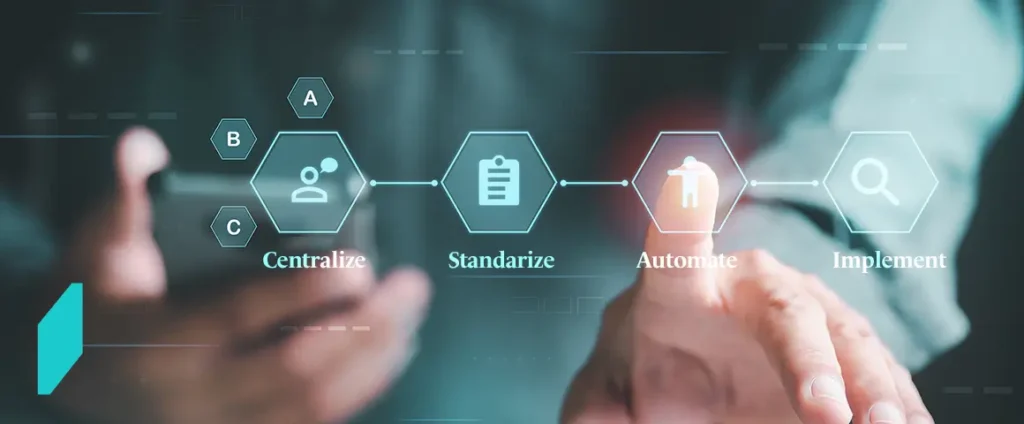Businessnewstips.com guide on How Contract Lifecycle Management Software Streamlines Business Processes

In today’s fast-paced business environment, organizations grapple with managing an ever-growing number of contracts. Contracts are the backbone of commercial relationships, governing everything from vendor agreements to employment terms. Yet, without an efficient system in place, the contract management process can become cumbersome, prone to errors, and time-consuming. Contract Lifecycle Management (CLM) software emerges as a solution to streamline and automate this crucial aspect of business operations.
What is Contract Lifecycle Management (CLM) Software?
Contract Lifecycle Management (CLM) software is a technological tool designed to manage contracts from initiation through execution, performance tracking, and renewal or termination. It provides a structured framework for creating, reviewing, storing, and analyzing contracts, making the entire process seamless and efficient.
Key Features of CLM Software
- Contract Creation and Templates: Pre-designed templates ensure compliance and save time.
- Approval Workflows: Automated workflows streamline the approval process.
- Centralized Repository: A single storage point for easy retrieval and management.
- Analytics and Reporting: Insights into contract performance and obligations.
- Integration Capabilities: Seamless integration with CRM, ERP, and other tools.
Benefits of Using CLM Software
Implementing CLM software offers multiple benefits that transform how businesses handle contracts:
1. Enhanced Efficiency and Productivity
Manual contract management is labor-intensive and prone to delays. CLM software automates repetitive tasks, such as drafting and routing contracts for approval, allowing employees to focus on strategic activities.
2. Reduced Risks and Increased Compliance
Contracts often include critical compliance requirements. CLM software ensures adherence to legal standards and internal policies by embedding compliance checkpoints and audit trails.
3. Improved Contract Visibility
A centralized repository provides easy access to all contracts, ensuring stakeholders have the information they need when they need it.
4. Faster Time-to-Revenue
Efficient contract execution accelerates deal closures, enabling businesses to realize revenue faster.
5. Cost Savings
By reducing manual errors, mitigating risks, and improving efficiency, CLM software significantly lowers operational costs.
Stages of Contract Lifecycle Management
Understanding the stages of contract lifecycle management helps illustrate how CLM software can streamline business processes:
1. Contract Request and Creation
CLM software simplifies the initial stage by providing customizable templates and collaboration tools. Stakeholders can quickly draft contracts that align with organizational standards.
2. Negotiation and Collaboration
The negotiation process becomes smoother with version control, comment tracking, and secure sharing capabilities. Parties can collaborate in real-time, reducing delays.
3. Approval Workflow
Automated workflows ensure contracts are routed to the right approvers, minimizing bottlenecks and ensuring timely reviews.
4. Execution and Storage
Electronic signatures enable swift contract execution. Once signed, contracts are automatically stored in a centralized repository for easy access and tracking.
5. Monitoring and Compliance
With built-in analytics and alerts, CLM software tracks key milestones, such as renewal dates or performance obligations, ensuring nothing falls through the cracks.
6. Renewal or Termination
CLM software notifies stakeholders of upcoming expirations, allowing proactive renewal or termination decisions, avoiding lapses or missed opportunities.
How CLM Software Streamlines Business Processes
The core value of CLM software lies in its ability to transform complex, manual processes into streamlined, automated workflows. Below are key areas where it optimizes business operations:
1. Automation of Repetitive Tasks
Creating and managing contracts manually involves repetitive steps that consume valuable time. CLM software automates tasks such as data entry, template selection, and routing for approvals.
2. Improved Collaboration Across Teams
CLM software bridges communication gaps between legal, sales, procurement, and other departments. By providing a shared platform, it fosters real-time collaboration and alignment.
3. Data-Driven Insights
Through advanced analytics, businesses gain insights into contract performance, negotiation trends, and potential risks. This data-driven approach supports informed decision-making.
4. Enhanced Security and Accessibility
Contracts contain sensitive information. CLM software offers role-based access controls, encryption, and secure storage, ensuring data confidentiality while enabling authorized access from anywhere.
5. Regulatory Compliance
Navigating complex regulatory environments becomes easier with CLM software. Pre-configured compliance checks and audit trails ensure contracts meet all legal and organizational standards.
6. Scalability for Growing Businesses
As businesses expand, so do their contract volumes. CLM software is scalable, handling increased workloads without compromising efficiency or accuracy.
Real-World Applications of CLM Software
1. Procurement
Managing supplier agreements is critical for cost control and supply chain efficiency. CLM software streamlines vendor onboarding, contract negotiations, and compliance tracking.
2. Sales and Revenue Management
Sales teams benefit from faster contract approvals and streamlined workflows, enabling quicker deal closures and improved revenue realization.
3. Legal and Compliance
Legal teams leverage CLM software to standardize contract language, ensure policy compliance, and reduce legal risks.
4. Human Resources
In HR, CLM software manages employment contracts, non-disclosure agreements, and other employee-related documents efficiently.
5. Healthcare and Pharmaceuticals
Regulated industries, such as healthcare, benefit from CLM software’s compliance features, ensuring adherence to stringent regulatory standards.
Choosing the Right CLM Software

When selecting a CLM solution, businesses should consider the following factors:
1. Ease of Use
An intuitive interface ensures quick adoption and minimizes training costs.
2. Customization
The software should accommodate unique business needs, such as custom templates and workflows.
3. Integration
Seamless integration with existing systems, such as CRM and ERP, is essential for maximizing value.
4. Scalability
Choose a solution that can grow with your business and handle increasing contract volumes.
5. Support and Training
Robust customer support and training resources ensure a smooth implementation and ongoing usability.
Future Trends in CLM Software
The landscape of contract management is continuously evolving. Emerging trends include:
1. Artificial Intelligence (AI)
AI-powered CLM tools can predict risks, automate complex negotiations, and extract valuable insights from contract data.
2. Blockchain Technology
Blockchain ensures contract authenticity and provides a tamper-proof record, enhancing security and trust.
3. Integration with Internet of Things (IoT)
IoT devices can trigger contract clauses based on real-world events, enabling dynamic contract management.
4. Mobile Accessibility
As remote work becomes the norm, mobile-friendly CLM solutions will gain prominence, allowing users to manage contracts on the go.
Conclusion
Contract Lifecycle Management (CLM) software is no longer a luxury but a necessity for businesses aiming to stay competitive in a digital-first world. By automating and streamlining contract-related processes, it reduces risks, improves efficiency, and accelerates revenue generation. Whether managing vendor agreements, employment contracts, or regulatory compliance, CLM software empowers organizations to focus on strategic growth.
Investing in the right CLM software tailored to your business needs can transform how you handle contracts, paving the way for increased productivity, better compliance, and sustained success. Explore the options available, and embrace the future of contract management today with insights from Businessnewstips.com.




